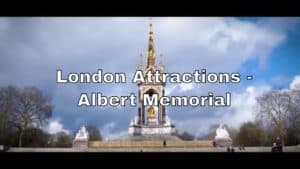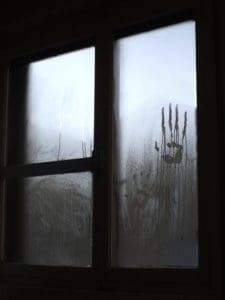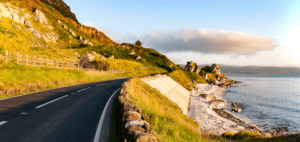The Black Forest: Unveiling Germany’s Mystical Woodland and Environmental Wonders
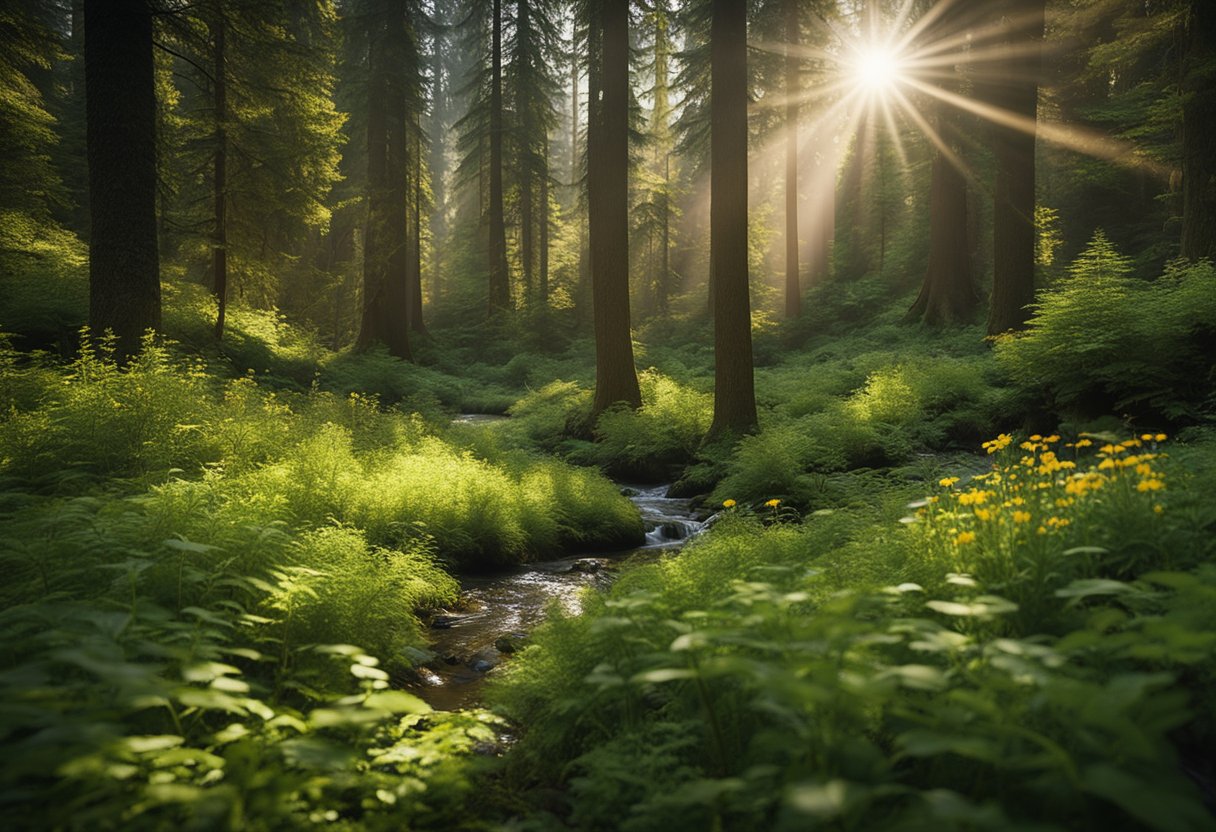
Updated On: April 16, 2024 by Yomna Salah
Nestled in southwest Germany, the Black Forest, known locally as Schwarzwald, is a captivating region that embodies enchantment and ecological diversity. Its dense fir and pine trees create an entrancing dark canopy above while the forest floor thrums with life. This vast mountainous expanse is not only a place of natural beauty but also a repository of cultural heritage and traditions.
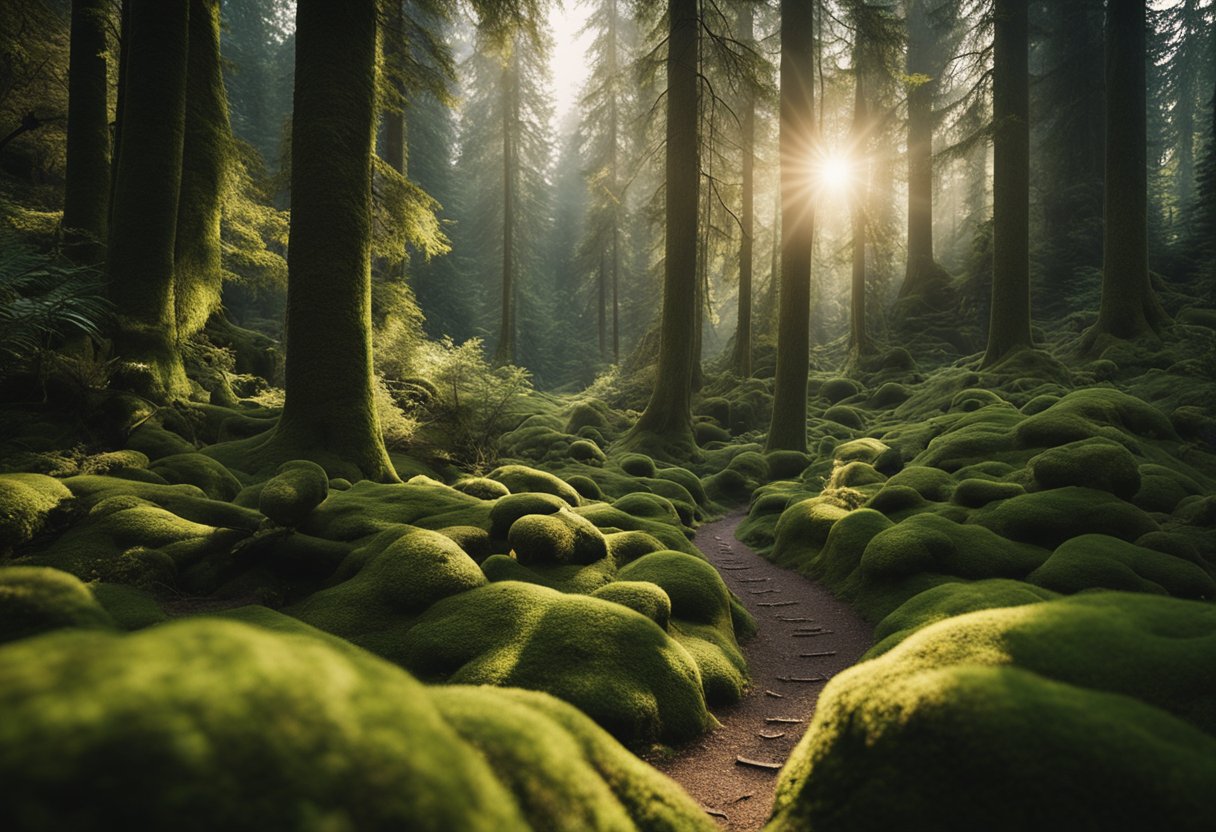
Its unique landscapes have been shaped over millennia, creating a wide array of geographical features, from serene valleys to rugged peaks. The region’s ecological significance is underscored by its varied climate and rich biodiversity, which include endemic flora and fauna. A destination for nature enthusiasts and travellers seeking authentic cultural experiences, the Black Forest offers a blend of outdoor activities, historical exploration, and a taste of local customs and artisanship.
Geography and Topography
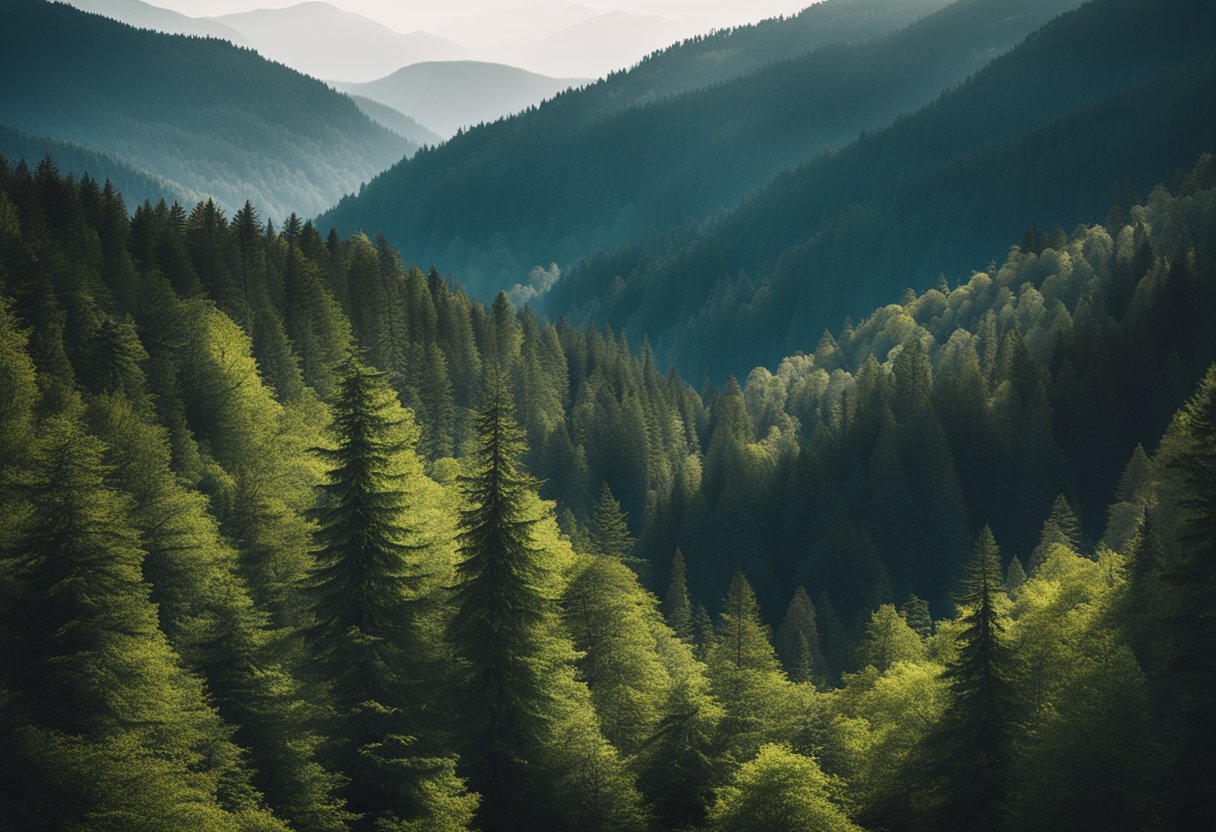
Schwarzwald is a renowned region in southwest Germany, characterised by its dense forests, varying landscapes, and significant elevations. Its geographical diversity contributes to the unique ecological fabric that has fascinated explorers and nature enthusiasts for centuries.
Mountains and Peaks
The Black Forest is home to some of the most iconic mountain ranges in Germany. The highlight of this majestic landscape is Feldberg, the highest mountain in the Black Forest, standing tall at 1,493 metres. It is followed by a number of substantial peaks that offer breathtaking vistas of the surrounding areas. Our journey across this terrain reveals the sheer scale and diversity of the elevations that form the Black Forest’s backbone.
- Feldberg (1,493 m)
- Herzogenhorn (1,415 m)
- Belchen (1,414 m)
Rivers and Valleys
The rivers and valleys of the Black Forest are significant both for their natural beauty and their contribution to the region’s ecosystem. The Rhine River forms the western boundary of the forest, an important waterway for Europe’s history and commerce. Meanwhile, the forest is the source of the Danube and Neckar rivers, providing life to the valleys they traverse. The Kinzig Valley, with its lush vistas and cultural history, is amongst the most charming of these.
- Rhine River – Boundaries of the Black Forest
- Danube and Neckar – Sources within the forest
- Kinzig Valley – A picturesque and culturally rich valley
Meadows and Lakes
Expansive meadows and serene lakes are scattered throughout the Black Forest, creating a landscape that is as tranquil as it is verdant. These grassland areas offer a contrast to the dense woodlands and are vital for the region’s biodiversity. Among the most notable lakes is Titisee, a glacial lake that draws visitors with its natural beauty, and Mummelsee, steeped in local legends and surrounded by forested slopes. The protected areas of the Black Forest National Park further showcase the ecological importance of these habitats, which support a wide variety of flora and fauna.
- Titisee (Lake)
- Mummelsee (Lake)
- Black Forest National Park (Protected Area)
Climate and Seasons

The Black Forest in Germany is a region where the climate is as varied as its landscapes. We’ll guide you through the seasonal atmospheres you can anticipate, from the warm breezes of summer to the crisp chill of winter, each offering unique opportunities for outdoor activities.
Summer Serenity
In summer, the region becomes a verdant haven with temperatures averaging a comfortable 20–25°C, beckoning nature lovers and adventurers alike. Light winds rippling through the trees create an idyllic setting for a hike through the forest’s extensive network of trails. As the warmest area, the Rhine valley is a magnet for those seeking sunny days, ideal for exploring the natural beauty.
Winter Wonderland
Come winter, a frosty blanket transforms the Black Forest into a Winter Wonderland. With the mercury often dipping below freezing, the snowy landscape is perfect for winter sports enthusiasts. Crisp days are well-suited for snowboarding, offering thrilling rides down the powdery slopes. The region’s elevation and climate guarantee a long snow season, with winter activities often starting in December and extending well into March.
Flora and Fauna
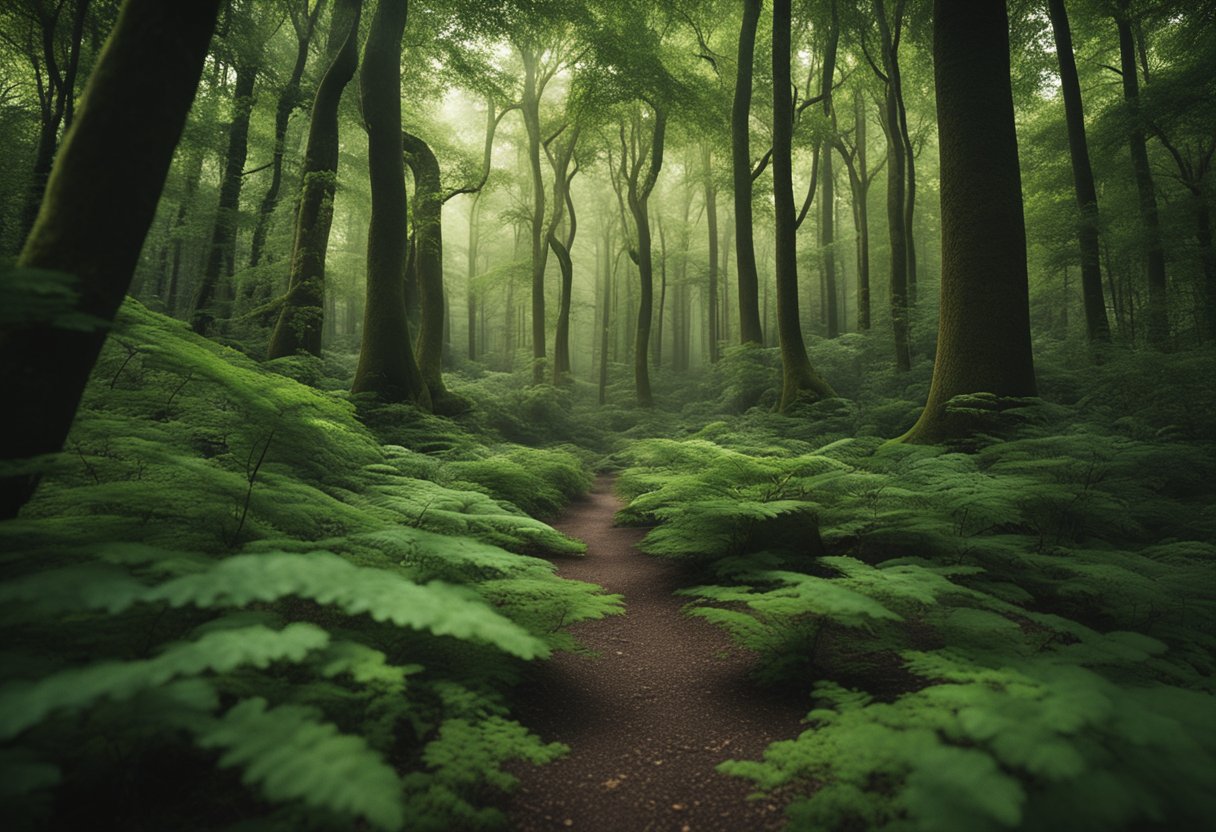
The region is renowned for its ecological bounty and boasts a rich tapestry of species and habitats. Here, we explore the verdant forests and the diversity of wildlife that thrives within this enchanting German landscape.
Forests and Trees
The Black Forest is dominated by a range of forest types, including deciduous and coniferous trees. Among the broadleaf species, the beech and oak stand tall and proud, a testament to the forest’s age and resilience. In contrast, pine trees add to the diversity, adapting well to the higher altitude and harsher conditions found in certain areas. This medley of trees not only forms a beautiful canopy but also supports a complex network of life, playing a crucial role in the forest’s biodiversity.
Wildlife Diversity
The Black Forest is a haven for wildlife, boasting an array of mammals, birds, and other species. It is one of the few places where the elusive Eurasian lynx has re-established itself, adding to the region’s biodiversity. The native wildcat is another rare mammal that calls this forest home. Birds are well represented here, with numerous species flitting through the canopy. The forests provide a sanctuary for these creatures, contributing to a rich tapestry of life that reinforces the Black Forest’s ecological importance.
Historical Significance
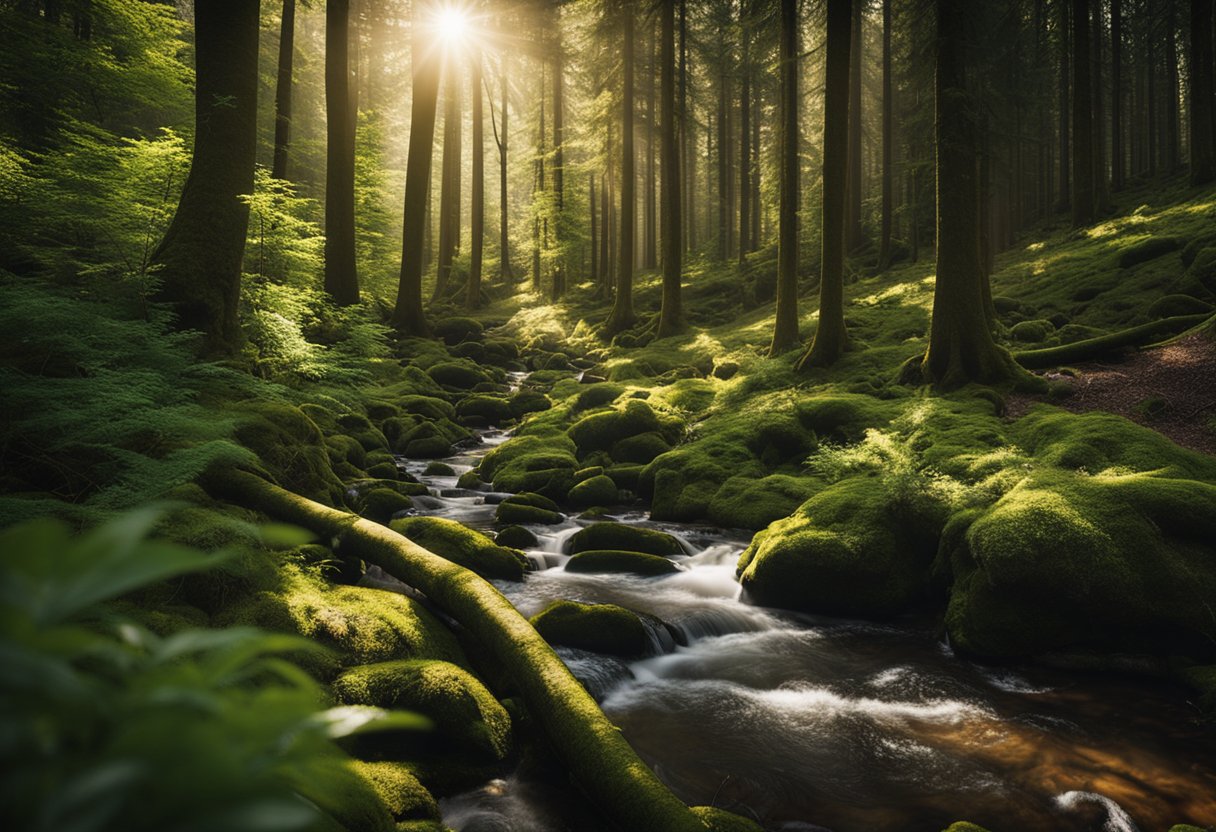
In exploring the Black Forest’s past, we uncover a rich tapestry of history that has been shaped by varied eras, from the days of the Roman Empire to modern times. Our journey delves into the realm of ancient legends and the inspiration for literary classics.
From the Romans to Modern Times
The Romans played an integral role in the history of Triberg, now a notable town in the Black Forest. They left behind remnants of their sophisticated engineering and strategic prowess. As the Roman Empire expanded, the Black Forest became a source of timber, mined minerals, and a strategic route for Roman emperors. The region entered a new era in the Middle Ages, evolving under the influence of the nobility and developing its quaint towns and communities that we know today.
Legends and Literature
The enchanting allure of the Black Forest has been a fertile ground for fairytales. The Brothers Grimm spun their narrations with threads pulled from the forest’s mysterious and brooding environment. Moreover, famed authors like Mark Twain have been moved by the forest’s haunting beauty, echoing its presence in their works. The Black Forest’s dark canopies and whispers of folklore also echo tales from the Roman era, as they stitched themselves into the cultural fabric of the region.
Cultural Traditions
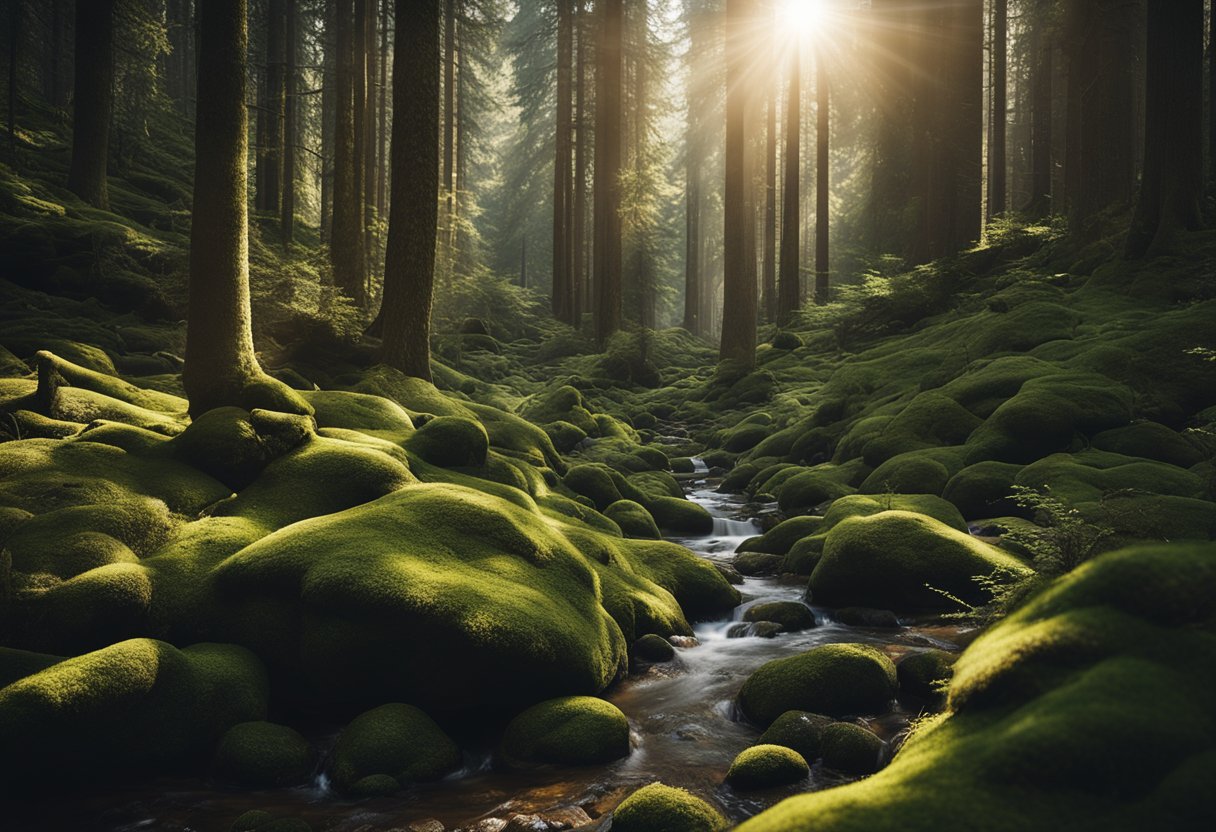
In the Black Forest, the fusion of cultural traditions and local craftsmanship creates a unique tapestry that defines this region of Germany. From age-old customs to famous culinary delights, the traditions of the Black Forest are a testament to its rich heritage and cultural depth.
Folklore and Crafts
The Black Forest is synonymous with cuckoo clocks, a symbol of traditional German woodworking excellence that dates back to the 17th century. In towns like Triberg, these timepieces are intricately handcrafted, featuring detailed carvings and mechanical birds that chime on the hour. Glass blowing is another revered craft in the region, producing delicate glassware that reflects the forest’s natural beauty.
Woodworking extends beyond clocks, encompassing a variety of crafts such as carving and toy-making. These practices are not just skills but are cherished as vital representations of the Black Forest’s identity.
Gastronomy and Delicacies
When it comes to gastronomy, the Black Forest offers an array of culinary delights. The Black Forest gateau, also known as Black Forest cake, is an indulgent dessert layered with chocolate sponge, whipped cream, cherries, and a distinctive splash of Schnapps.
Black Forest ham, known for its rich flavour and deep smokey aroma, is a product of the traditional air-curing process that has been refined over centuries in this area. Another culinary staple is the hearty Maultaschen, a type of dumpling filled with minced meat, onions, and spinach, often seasoned with traditional herbs and spices.
These gastronomic traditions extend beyond tastes and flavours; they are a celebration of the Black Forest’s agricultural history and connection to the land. Whether it’s the sweetness of the cake or the savouriness of the ham, each bite tells a story of the forest’s bountiful resources and the people’s mastery in transforming them into exquisite fare.
Outdoor Activities and Sports
The Black Forest in Germany beckons adventure enthusiasts with a plethora of outdoor activities set amidst its magical landscapes. Whether you’re seeking the thrill of downhill skiing or the tranquillity of forest walks, this region offers an exceptional array of experiences to immerse yourself in nature.
Hiking and Walking Trails
The Black Forest is home to some of Germany’s most beautiful hiking paths, including the renowned Westweg trail, which stretches over 285 kilometres. For a less demanding but equally rewarding experience, the area boasts an extensive network of walking trails suitable for all levels of fitness.
- Paths for Every Hiker: From leisurely strolls to challenging treks, there’s a path for everyone.
- Exploring Lake Titisee: Venture to the shores of Lake Titisee for trails that offer scenic views and opportunities for water sports.
Winter Skiing and Sports
Come winter, the Black Forest transforms into a wonderland for skiing and other snow sports. With a range of slopes catering to both novices and seasoned skiers, everyone can enjoy the snowy peaks of the region.
- Feldberg Ski Resort: The highest peak in the Black Forest provides an array of slopes.
- Cross-country Skiing: For those who prefer cross-country, trails are meticulously maintained for a pristine skiing experience.
Tourism and Travel

We invite you to delve deeper into the enchanting Black Forest, a region that promises an unforgettable journey for every traveller. With its mesmerising landscapes and vibrant towns, the Black Forest offers a wide array of experiences tailored to delight visitors.
Towns and Attractions
The Black Forest’s towns are brimming with cultural heritage and natural beauty. Freiburg, known for its sunny climate and vibrant student life, is also the gateway to the Black Forest. The town’s Gothic cathedral and cobblestoned streets captivate travellers. Baden-Baden, a luxurious spa town, provides a respite with its hot springs and gardens. For authentic cuckoo clocks and the highest waterfall in Germany, Triberg is a must-visit. Freudenstadt boasts the largest marketplace in Germany, surrounded by historical buildings.
Nearby, the Hotel Traube Tonbach is a destination itself, combining luxury with traditional Black Forest hospitality. Various attractions, including theme parks, hiking trails, and panoramic views, are found throughout these historic towns, ensuring that every visitor’s experience is rich and varied.
Accommodations and Travel Tips
Accommodations in the Black Forest range from luxury hotels to cosy guesthouses. To truly experience the Black Forest, we suggest staying at a local vacation rental or a hotel that captures the region’s rustic charm.
When planning travel, consider obtaining the Konus Guest Card, which offers free public transport throughout the Black Forest. Exploring the region without a car is not only possible but enjoyable, with extensive bus and train networks connecting visitors to major attractions. The city of Stuttgart is a common entry point with easy access to the Black Forest.
Travel tips for the Black Forest include carrying a good map, being prepared for changeable weather, and, if possible, visiting during the off-peak season to avoid crowds. For a seamless travel experience, always check the opening times for attractions, particularly in smaller towns like Triberg or Baden-Baden.
Our insights stem from a genuine desire to present travel facts that are as dependable and informative as possible, ensuring your journey to the Black Forest is nothing short of magnificent.
Transportation and Accessibility
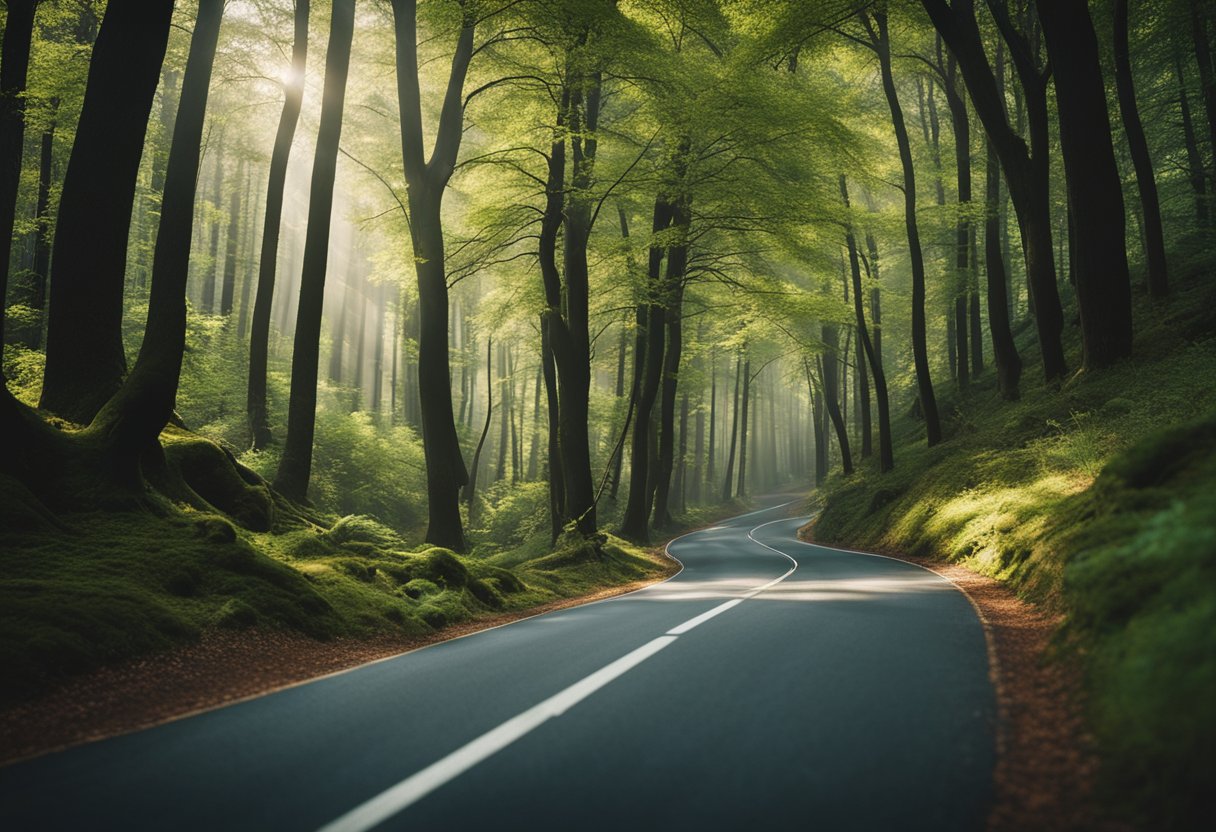
The enchanting Black Forest region offers various transportation options ensuring visitors can navigate the area with ease. From scenic drives to efficient public transport, getting around is convenient for everyone.
Roads and Driving
Travelling by car provides the freedom to explore the Black Forest at one’s own pace. Motorways such as the A5 run adjacent to the area, connecting major cities like Basel to the south and Offenburg to the north. Within Baden-Württemberg, well-maintained roads wind through the forest, offering spectacular views and access to hidden gems.
- Key Motorways/Roads:
- A5 (Basel to Offenburg)
- B500 (Schwarzwaldhochstraße)
Remember to abide by German driving laws, which can differ from other countries.
Public Transit Options
For those without a car or preferring not to drive, the public transport system is reliable and extensive. Trains operated by Deutsche Bahn connect the Black Forest with the rest of Germany and neighbouring Switzerland. Major train stations in the region are found in Offenburg and other towns, with routes that include scenic journeys through the forest.
- Train Services:
- ICE, Regional-Express, Regionalbahn
- S-Bahn in larger urban areas
Trains connect with local bus services, providing comprehensive coverage for both locals and tourists alike.
Ecology and Sustainability
In the heart of Europe lies a natural treasure, the Black Forest, renowned for its rich biodiversity and natural setting. Here, we look at the ongoing efforts to preserve this unique environment through conservation and sustainable tourism initiatives.
Conservation Efforts
The Black Forest is home to a vast range of plant and animal species, all thriving within its protective embrace. Recognising the area’s ecological significance, the establishment of the Black Forest Biosphere Reserve ensures a commitment to maintaining the region’s biodiversity. Additionally, the Black Forest National Park stands as a testament to Germany’s dedication to conservation, aiming to restore natural processes in a way that allows the forest ecosystem to develop according to its own ecological principles, free from human intervention.
Sustainable Tourism
As a beloved destination, the Black Forest balances welcoming tourists with preserving its enchanting landscapes. We promote sustainable tourism by encouraging visitors to experience the forest responsibly and support local economies. This is achieved through well-organised trails, eco-friendly accommodations, and by providing educational resources, ensuring that our interaction with nature is in harmony with the environment. Efforts like these not only enhance tourists’ experiences but also safeguard the Black Forest’s allure for future generations.
Architecture and Landmarks
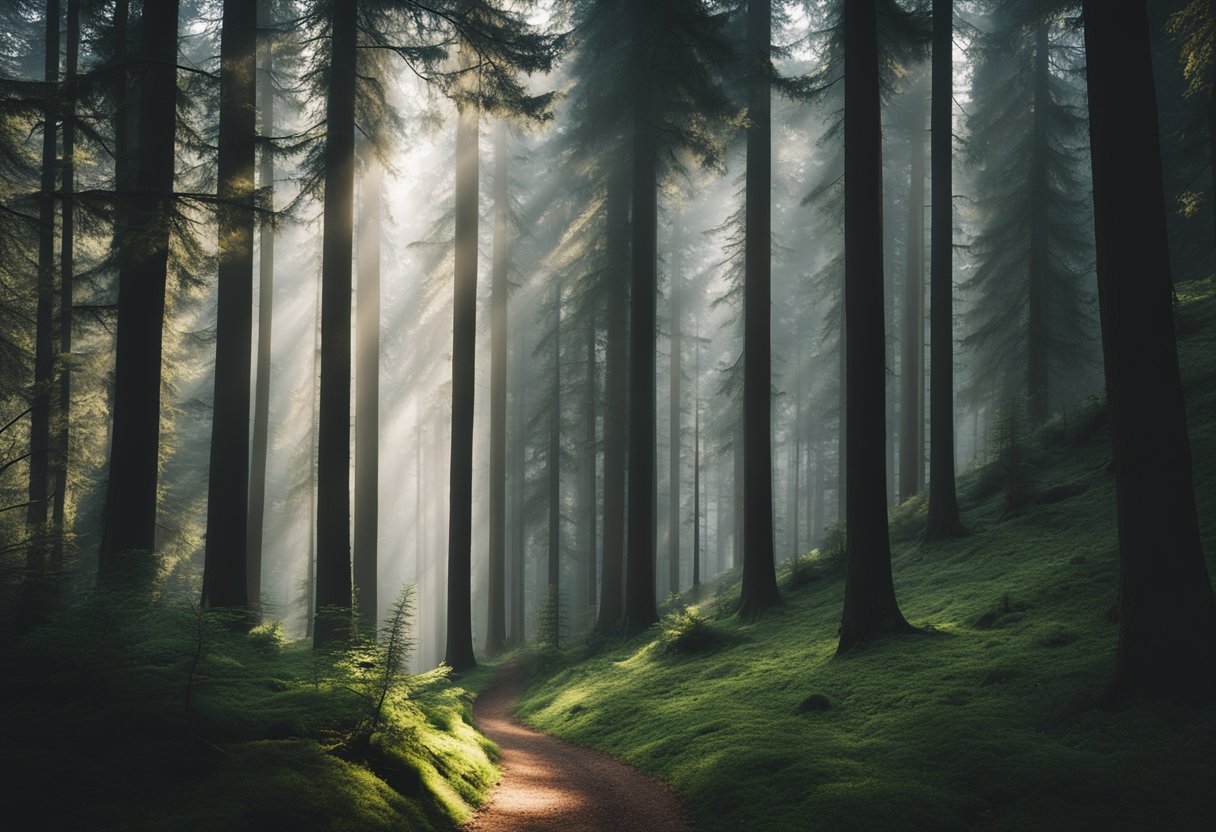
The Black Forest, with its dense woodlands and picturesque landscapes, also offers a unique glimpse into historical and modern architectural wonders. From the traditional hearths to the contemporary marvels, each structure tells a story of this region’s evolution over time.
Historical Buildings
In our journey through the Black Forest, we encounter a rich tapestry of historical buildings that stand as testaments to the region’s heritage. Castles, nestled amidst the rolling hills, offer a panoramic view of the forest’s grandeur and the layers of history that they have witnessed. Notable among them is the Hohenbaden Castle, which dates back to the 12th century, commanding the landscape with its majestic ruins that inspire awe in every traveller who visits.
Moving from the grandeur of castles to the humble authenticity of rural life, the Black Forest Open Air Museum Vogtsbauernhof showcases original architecture transported from various parts of the Black Forest. Here, we learn about the traditional lifestyle as we explore farmhouses with their distinctive hipped roofs that speak of practical design adapted to the region’s conditions.
Modern Constructions
While revering its past, the Black Forest does not shy away from contemporary expressions. Modern constructions emerge, offering a stark yet complementary contrast to the traditional Black Forest house. In the heart of the forest, visitors might be surprised by the cutting-edge architecture that now dots the landscape, serving as cultural centres or innovative residential spaces that reflect modern living standards and environmental considerations.
Our architecture and landmarks not only illustrate the Black Forest’s historical journey but also spotlight its vibrant present, making it a truly enchanting region rich with both natural beauty and human creativity.
Arts and Handicrafts
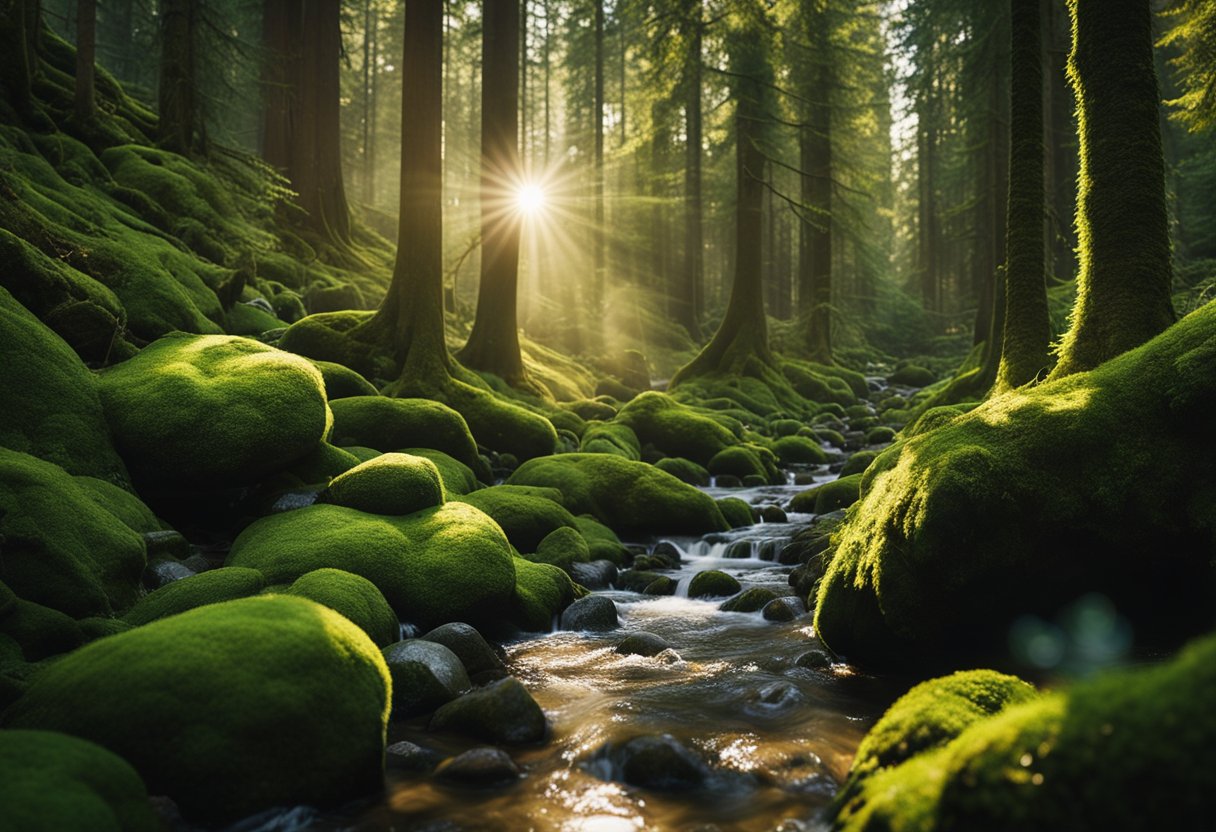
The Black Forest region is celebrated for its exquisite traditional crafts. Our exploration reveals a deep-rooted heritage of watchmaking and woodcraft, each telling a story of skill and precision passed down through generations.
Watchmaking Tradition
In the heart of the Black Forest, the art of watchmaking has a storied history. This precision trade took root centuries ago, propelling the region to worldwide recognition. Today, watch enthusiasts and collectors still seek out handcrafted timepieces fashioned with the same meticulous care established by forebears. The watches, renowned for their quality and intricacy, are a testament to the region’s enduring dedication to this delicate craft.
Woodcraft and Artistic Expressions
Our eyes are equally captured by the Black Forest’s woodcraft. From the timber used in construction to the delicate wood carvings sold as souvenirs, the materiality of wood is at the soul of the region. The most famous of these wooden creations is undoubtedly the cuckoo clock, an iconic symbol of the Black Forest’s artistic expression. Beyond timekeeping, woodcraft here includes an array of objects showcasing the dexterity and creativity of local artisans, each item embodying the spirit of the Black Forest.
Frequently Asked Questions
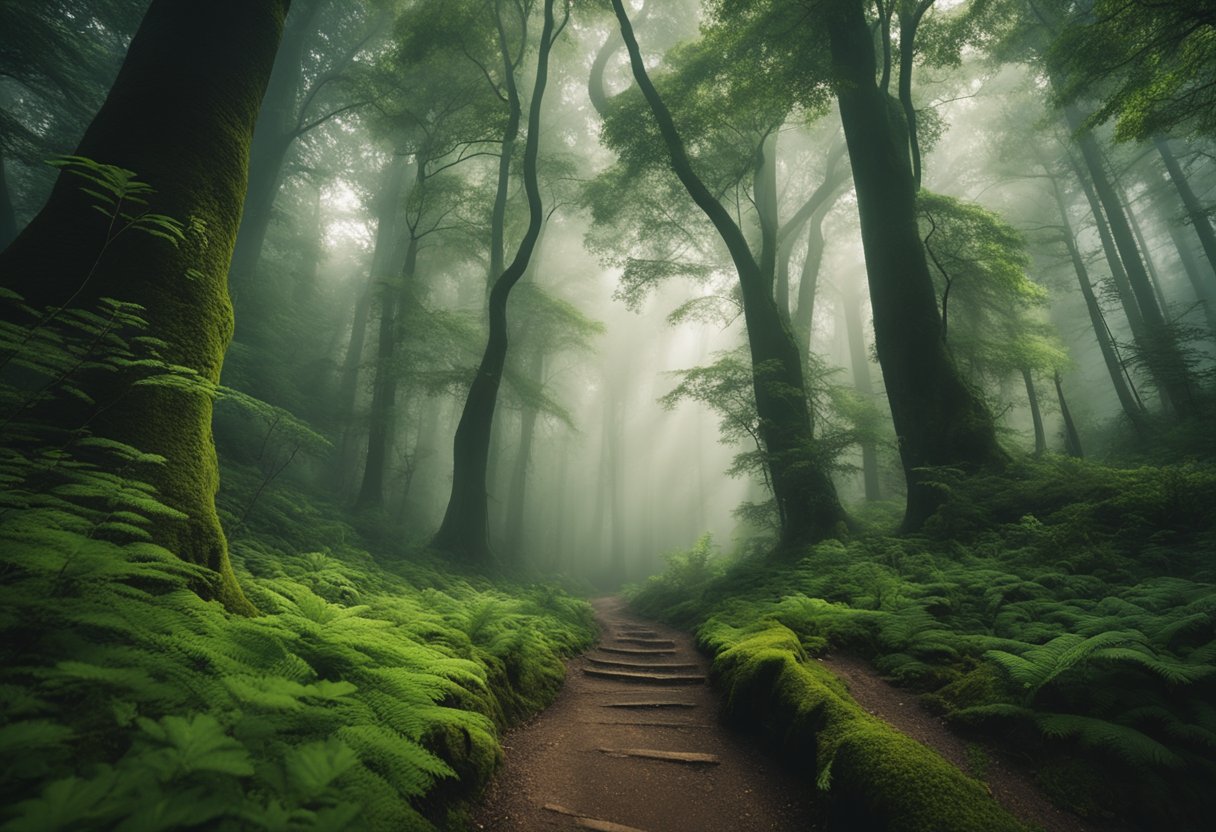
We’ve gathered some of the most common enquiries about the Black Forest to provide you with precise and informative insights into this majestic region of Germany.
What measures are being taken to conserve the Black Forest’s ecosystem?
To maintain the biodiversity and ecological integrity of the Black Forest, various conservation initiatives are actively implemented. These include habitat restoration, monitoring of wildlife populations, and sustainable forest management practices. The Black Forest Biosphere Reserve is a significant effort aiming to balance ecological preservation with local economic development.
Why does the Black Forest hold such a significant place in German heritage?
The Black Forest is interwoven with German culture and folklore and is celebrated for its picturesque landscapes and traditional industries like clock-making. Its influence is seen in numerous fairy tales and is a source of national pride for its natural beauty and contribution to German identity. Explore how it’s synonymous with German heritage through the experiences compiled by Northern Wanderers.
Can you recount any peculiar occurrences reported within the Black Forest?
The Black Forest is a hotbed of mystical legends and tales, from headless horsemen sightings to the lore of das grosse Vorkommen, a fabled massive treasure. These stories, while intriguing, are more reflective of the area’s rich folklore than actual events.
What species of wildlife can be encountered within the Black Forest?
A diverse array of wildlife inhabits the Black Forest, ranging from red deer and wild boars to lynx and various bird species like the capercaillie. Efforts to preserve habitats in the region maintain a safe haven for these animals, offering visitors the chance to spot them in their natural environment. Learn more about the wildlife from insights provided by the Black Forest Family.
In which German state is the Schwarzwald, or Black Forest, located?
The Black Forest, known as Schwarzwald in German, is situated in the state of Baden-Württemberg in the southwestern part of Germany, bordering France and Switzerland. It is a key geographical and cultural region of the country, which is detailed further on Wikipedia.
Are there any safety concerns visitors should be aware of when exploring the Black Forest?
Visitors should be mindful of typical outdoor safety concerns such as navigating trails, weather changes, and local wildlife. It’s important to stay on marked paths, wear appropriate attire, and be aware of your surroundings. For a comprehensive guide to navigating the region safely, refer to travel tips like those found on My Global Viewpoint.


